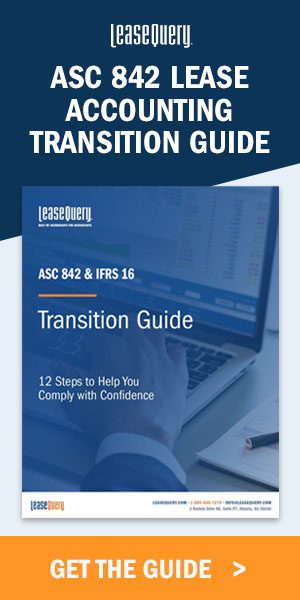This article, "Are Your Clients Ready for New Lease Accounting Standards?," originally appeared on AccountingWeb.com.
As private companies look to delay the effective date of new lease accounting standards, the temptation to kick the can down the road is alluring, just not realistic or helpful.
Resources are tight and it’s understandable that your clients may want to return to a semblance of normalcy before diving into the new lease accounting standard. But any delay is a false sense of security and private companies that don’t use the additional time wisely run the risk of falling behind. Here’s some tips to help get them to ultimately face the music:
Getting in Tune With Leases
The first step is to ensure your clients have a grasp on all of their leases. In many cases, developing a lease inventory could require changing the organization’s culture around leases. It’s not uncommon for leasing practices to be decentralized. Leases are often signed, renewed, and terminated with no oversight from the corporate office.
Adding to the complexity around gathering leases is that embedded leases must also be included in the lease inventory. Because they’re typically embedded in service contracts – such as security service agreements or logistics contracts – identifying these leases isn’t always simple.
In fact, when we asked accountants in the later stages of their transition about which tasks were the most time-consuming, inventorying leases ranked first. If your clients haven’t begun this crucial first step, they’re already behind regardless of whether or not there’s a delay in the deadline.
Finding the Rhythm With a Lease System
As part of the process of gathering leases and relevant information, your clients will need somewhere to keep that data. Some companies are electing to save this information on local share files or in file cabinets with hard copy files. This is a setup for more work down the line.
At some point, they’ll need to take those files and put them into their lease software of choice. A cloud-based system helps to mitigate many potential efficiency issues– employees in the field can upload documents to a common system that can also prompt them to provide more information where needed.
Clients that have a system in place while compiling their lease inventory will eliminate the additional time and potential errors that come with this step. It will also help prevent surprises later on.
However, your clients need to give themselves time to evaluate, choose and implement the right solutions. They also need to test it well before they need to pull their first reports and transition journal entries.
One lesson from public companies and early adopters is that the scramble to meet the deadline often led to rushed and later regretted decisions. In a recent Robert Half study, 95 percent of respondents said they plan to change their approach to lease accounting compliance in the future by adopting new systems.
Live by the mantra: “If you don’t have time to do it right, when will you have time to do it over?” Companies that assume they’ll have time to adopt a better system at some unknown future date are only setting themselves up for more work down the line.
Beat the Drum for Readiness
There’s a big gap between where companies are today and where they want to be. This presents a challenge for your clients and an opportunity for your firm’s business.
Most accounting departments don’t have any idle time today. Even if they’re considering adding headcount, the job market is stiff and finding new employees, especially accountants who know lease accounting, is time-consuming.
Outside resources are often critical to keep the lease transition project on track. From training on the new standard to identifying embedded leases, you can be a valuable conductor for change to ensure your clients meet the deadline and do it right the first time.
Beyond the initial concerns around compliance, you can also help your clients prepare for the broader impact of the new standard. What’s the impact to the balance sheet? What types of data insights will companies have access to, and how will that data affect future business decisions? Right now, your clients may be too deep in the weeds to think about strategic implications, but you have the insight and expertise to help them see the bigger picture.
Meeting the Deadline With Bells On
If the implementation deadline is indeed pushed to January 2021, your private clients still have one year-end, at least one audit and two budget cycles between now and then. The additional time isn’t a reason to delay, but rather an opportunity to create a timeline that weaves in the lease transition with harmony around these day-to-day tasks. Clients should proceed with continued urgency.



